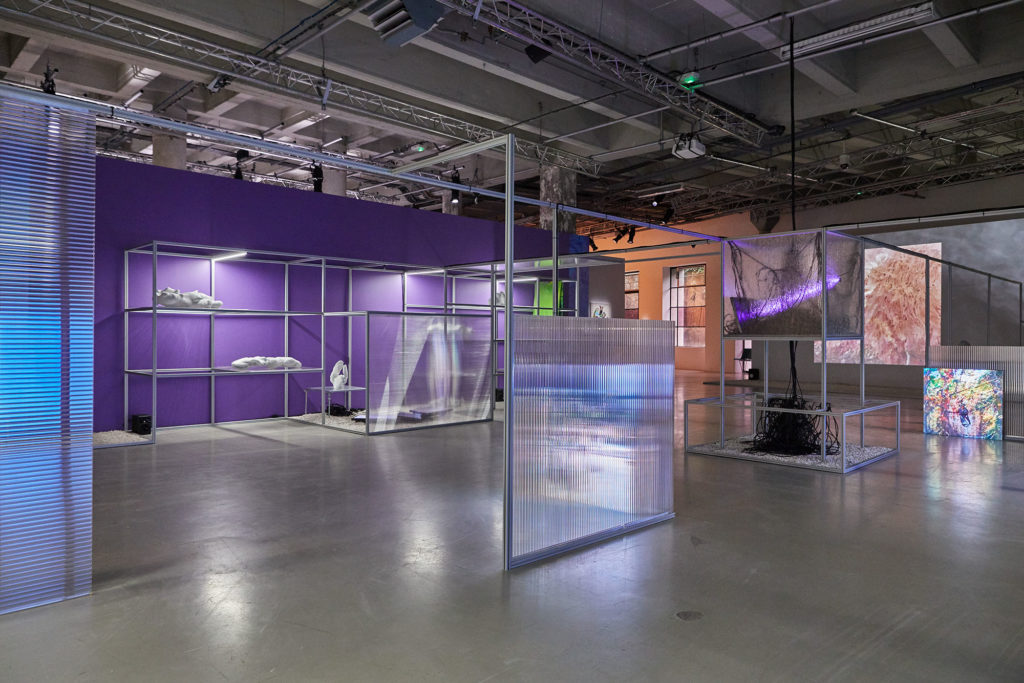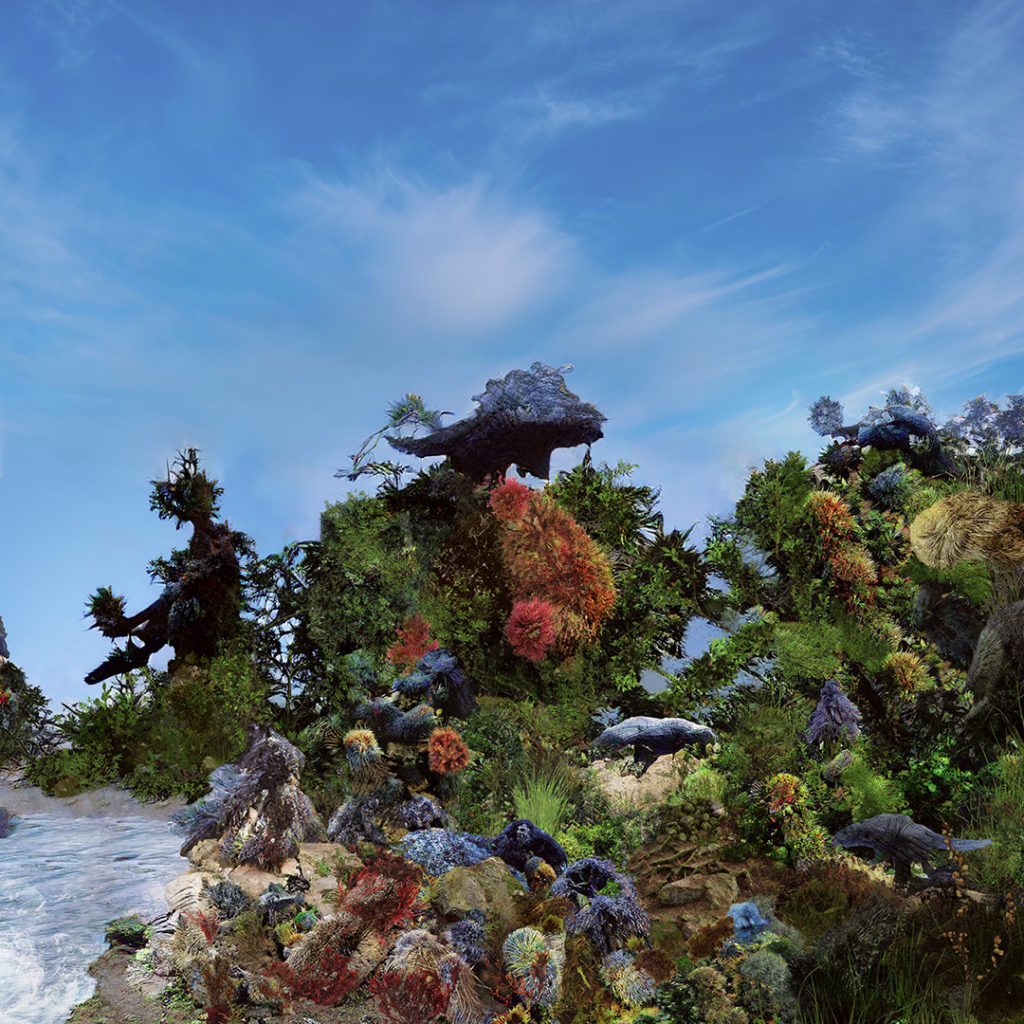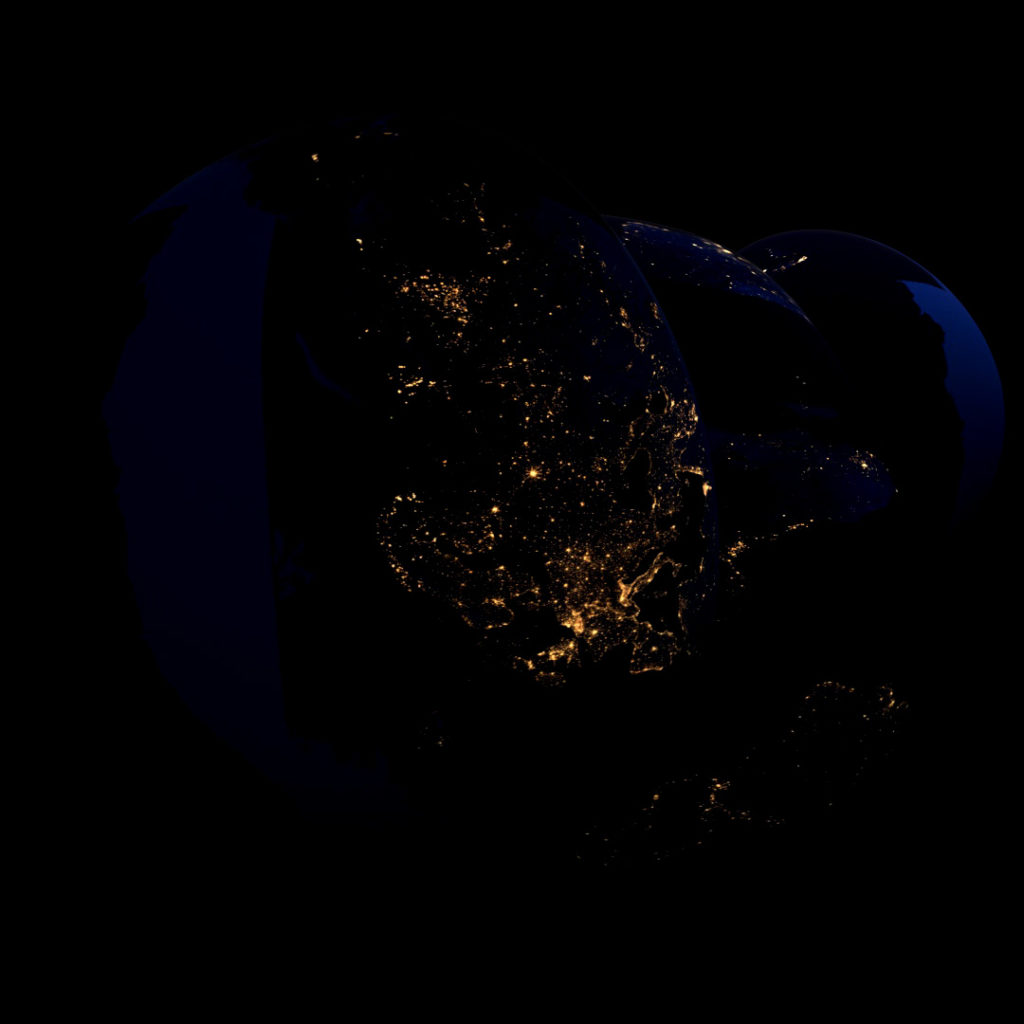L’autre Terre / The Other Earth

Nous sommes sans doute en train de changer de planète. La manière dont la Terre avait été conçue au 16e et 17e siècle, comme espace infini d’émancipation (et d’exploitation) et dont les racines plongent dans la conception de la relation entre la forme et la matière dans la Physique d’Aristote, semble céder sa place à une autre planète dont les contours restent incertains, mais en cours d’émergence rapide. Un continent s’élève sous nos pieds, nous en percevons les vibrations sans parvenir encore à le voir à l’horizon. Ainsi le sol sur lequel nous avions cru nous tenir vacille, un autre prend sa place. Nous sommes toujours terrestres, mais plus vraiment terriens, ou alors en un sens nouveau faisant de nous des extra-terriens, une espèce étrangère à notre propre réflexivité, ouvrant la possibilité d’une autre existence.
Or, si ce vacillement de l’étroite zone que nous habitons avec d’autres vivants pourrait mener à un discours de la localisation, de l’enracinement, du « Grund » et pour tout dire à une tonalité réactionnaire (la réaction la plus dangereuse consistant à faire advenir un passé qui n’a jamais eu lieu, à réparer une trahison des origines), j’aimerais proposer que cette Terre qui est en train d’émerger a aussi son histoire propre dans la puissante pulsion des êtres humains à imaginer, au fil du temps, une Terre alternative, qu’elle soit à l’intérieur de la nôtre comme un gant retourné, ou toute proche, mais invisible. Tout se passe comme si la Terre, en tant que surface métamorphique, était par nature incertaine d’elle-même, lui offrant un potentiel quasi-réflexif, et se dédoublait de simulacre en simulacre, au sens épicurien. La Terre n’est jamais seule, la domus est hantée par d’autres. Habiter c’est faire le deuil du sol.
Ce serait dire là qu’entre la mutation écologique et l’altérité (dont une forme possible est l’altération) de la Terre, il y aurait un lien secret, car contre-intuitif. On a vite fait d’opposer une relation prétendument naturelle à la Terre dont la décroissance réparatrice serait la politique, à une relation prédatrice parce que technique, la physis à l’Arraisonnement (Gestell) pour faire un raccourci. Or l’éco-logie n’est rien d’autre que l’appartenance de la technique à la physis, son inclusion, et en étant une des formes possibles de métamorphose. Pour ainsi dire la technique est une métamorphose de métamorphose entraînant la Terre entière dans l’emboîtement infini d’un simulacre. De sorte que le projet métaphysique porté par la technique, comme construction de relations causales, dont la forme finale est de créer une autre Terre, que celle-ci soit aujourd’hui dans les fantasmes de mémoire des data centers, dans la géoingiénerie ou dans la colonisation d’autres planètes que l’on souhaite rendre habitable à la manière de la Terre, n’est pas un déni de la crise écologique, mais est peut être une des formes possibles de l’écologie.
L’autre Terre est en ce sens structurellement ambivalente. Elle peut être une échappée post-terrienne qui occulte la matérialité critique de la planète au profit de la lutte des classes, mais elle peut être aussi un destin historial qui articule profondément l’habitation terrestre à la technique. La décroissance pourrait bien, de ce point de vue, être considérée, malgré les apparences, comme un projet complice de la dévastation planétaire, car elle est le fantasme d’un monde pur, intouché, intact, immun. Il reste donc à imaginer et mettre en œuvre une technique matériellement métamorphique, c’est-à-dire étant la forme de son changement, passant de forme en forme, se recombinant avec la matière. Une technique enfin terrienne (ou enfin technique, ou enfin artistique, ce qui revient au même) et une Terre enfin autre, toujours autre.

We are undoubtedly in the process of changing planet. The way in which the Earth was conceived in the 16th and 17th centuries, as an infinite space of emancipation (and exploitation) and whose roots lie in Aristotle’s conception of the relationship between form and matter in Physics, seems to be giving way to another planet whose contours remain uncertain, but which is in the process of rapid emergence. A continent rises beneath our feet, we perceive its vibrations without yet being able to see it on the horizon. Thus the ground on which we thought we were standing wobbles, another takes its place. We are still terrestrial, but no longer really terrestrial, or in a new sense making us extra-terrestrials, a species alien to our own reflexivity, opening the possibility of another existence.
Now, if this vacillation of the narrow zone we inhabit could lead to a discourse of location, of rootedness, of “Grund”, and in short to a reactionary tone (the most dangerous reaction consisting in bringing about a past that has never happened, in making up for a betrayal of origins), I would like to propose that this Earth that is emerging also has its own history in the powerful impulse of human beings to imagine, throughout history, an alternative Earth, whether it is inside ours like an upside-down glove, or very close, but invisible. It is as if the Earth, as a metamorphic surface, is by nature uncertain of itself, offering it reflexive potential, and splits from simulacrum to simulacrum, in the epicurean sense. The Earth is never alone, the domus is haunted by others. To live is to mourn the ground.
This would mean that there is a secret, counter-intuitive link between ecological mutation and the otherness (one possible form of which is alteration) of the Earth. We quickly opposed a supposedly natural relationship to the Earth, whose reparative degrowth would be political, to a predatory relationship because it is technical, physis to Boarding (Gestell), as a shortcut. Now eco-logy is nothing other than the fact that the technique belongs to physis, its inclusion, and by being one of the possible forms of metamorphosis. So to speak the technique is a metamorphosis of metamorphosis taking the whole Earth into the infinite nesting of a simulacrum. So that the metaphysical project carried by the technique, as a construction of causal relations, whose final form is to create another Earth, whether it is today in the memory of data centres, in geoengineering or in the colonisation of other planets that we wish to make habitable in the manner of the Earth, is not a denial of the ecological crisis, but is perhaps one of the possible forms of ecology.
The other Earth is in this sense structurally ambivalent. It may be a post-terrestrial escape that obscures the critical materiality of the planet in favour of a class struggle, but it may also be a historical destiny that profoundly articulates terrestrial habitation with technology. From this point of view, degrowth could well be considered, despite appearances, as a project complicit in the planetary devastation, because it is the fantasy of a pure, untouched, immune world. It therefore remains to imagine and implement a materially metamorphic technique, that is to say being the form of its change, going from form to form, recombining with matter. A technique that is finally earthly and an earth that is finally different, always different.

